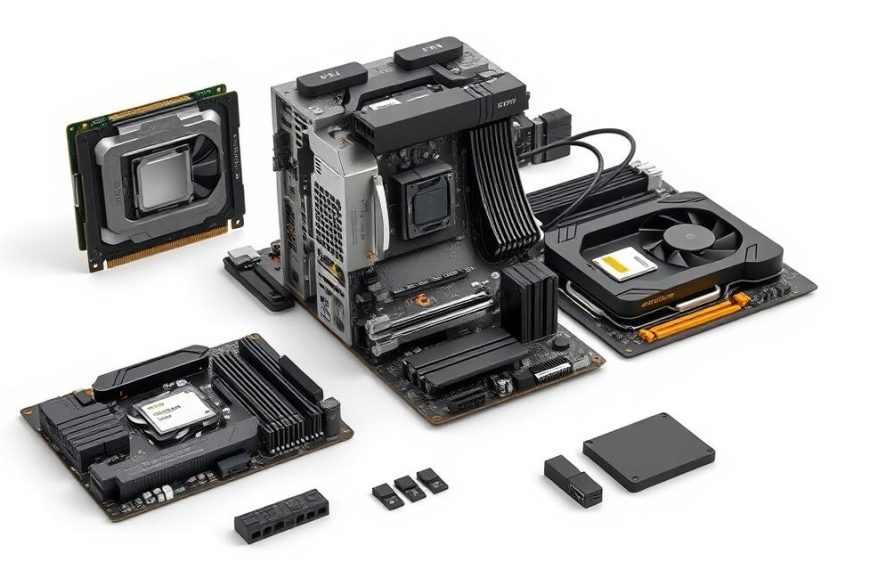Radiologic technology is a fast-growing healthcare field with strong demand nationwide. Professionals in this field enjoy rewarding careers, with average salaries reaching $61,070 in states like North Carolina. Job growth projections range from 6% to 44% across different regions.
Many institutions provide excellent training for this career path. Programs like those at University of Iowa and Foothill College boast impressive 100% job placement rates. Students can choose between traditional campus settings or flexible online formats.
North Carolina schools such as Asheville-Buncombe Tech and Cape Fear CC offer quality education with local clinical opportunities. Certification requirements vary by state, but accredited programs prepare graduates for licensing exams.
What Colleges Offer Radiologic Technology Programs?
Students pursuing medical imaging careers have multiple degree options at quality institutions. Over 350 schools provide pathways into this field, with 16,000 annual job openings nationwide. Choosing the right program depends on career goals, time commitment, and accreditation status.
Associate vs. Bachelor’s Pathways
An associate degree from a community college typically requires 64 credits and two years. These programs focus on clinical skills and ARRT exam prep. For example, *Asheville-Buncombe Tech* integrates 1,200+ clinical hours into its 84-credit curriculum.
Bachelor’s degrees, like those at the University of Iowa, span four years and 120 credits. They offer advanced specializations, such as MRI or CT imaging. Iowa’s program includes five tracks, blending theory with hands-on rotations.
Why Accreditation Matters
JRCERT and CAAHEP set rigorous standards for clinical training and coursework. Accredited programs ensure eligibility for the ARRT exam—a must for licensure. Mesa College’s JRCERT-accredited courses emphasize critical thinking and patient communication.
When evaluating education options, verify accreditation status first. This guarantees alignment with industry demands and maximizes job prospects post-graduation.
Best Radiologic Technology Schools in the US
Leading institutions across the U.S. provide top-tier training for medical imaging careers. These programs combine rigorous coursework with hands-on clinical experience, preparing graduates for high-demand roles.
University of Iowa
The University of Iowa stands out with a 100% job placement rate and five specialty tracks, including MRI and breast imaging. Residents pay just $5,861 in tuition annually.
Students benefit from rotations at Carver College of Medicine, gaining exposure to advanced imaging techniques. The program’s 120-credit curriculum balances theory and practice.
Foothill College
At Foothill College, ARRT exam pass rates range from 96% to 100%. The lottery-based admissions system ensures fairness, while 15 Silicon Valley clinical partners offer real-world training.
Tuition costs $5,200, making it an affordable choice for aspiring technologists. The program emphasizes patient care alongside technical skills.
City College of San Francisco
City College San Francisco delivers exceptional value, with free tuition for local residents. Its RADSCI program boasts a 97% first-time exam pass rate.
California residents pay $4,600 annually, with concentrations in CT and diagnostic imaging. Clinical hours are integrated into the 64-credit curriculum.
| School | Tuition (Resident) | ARRT Pass Rate | Specializations |
|---|---|---|---|
| University of Iowa | $5,861 | 100% | MRI, CT, Breast Imaging |
| Foothill College | $5,200 | 96-100% | Diagnostic, Fluoroscopy |
| City College San Francisco | $4,600 (Free for SF residents) | 97% | CT, Radiography |
Public institutions like these offer cost-effective pathways into the field. Specialty tracks and strong clinical partnerships set them apart from private technical college options.
Top Colleges by Region
Geographic location plays a key role in selecting the right program for aspiring technologists. Regional schools offer unique advantages, from clinical partnerships to specialized certifications.
West Coast Programs
Santa Barbara City College stands out with $5,500 tuition and a 93% ARRT pass rate. Nearby, Mt. SAC uses a waitlist system to manage high demand.
California’s Pasadena City College integrates clinical rotations across seven states. These programs emphasize hands-on training in diagnostic and CT imaging.
Midwest and Plains States
Mitchell Technical College boasts a 100% job placement rate and an all-female faculty team. As a leading state university affiliate, it offers advanced MRI tracks.
In Iowa, Des Moines Area Community College partners with local hospitals for real-world experience. Tuition averages $4,800 annually.
Southern and Eastern Schools
Ogeechee Technical College in Georgia delivers CT certificates with a 96.4% exam pass rate. Virginia Commonwealth University provides bachelor’s specializations in sonography.
New York’s Touro College focuses on nuclear medicine, while Quinnipiac University in Connecticut awards 21 degrees yearly.
| Region | Top School | Tuition | Special Feature |
|---|---|---|---|
| West Coast | Santa Barbara CC | $5,500 | 93% ARRT pass rate |
| Midwest | Mitchell Tech | $4,900 | 100% job placement |
| East | Virginia Commonwealth | $12,000 | Sonography tracks |
Salaries vary by region, with a national median of $73,000. Southern states like North Carolina average $61,000, reflecting cost-of-living differences.
Career Outlook for Radiologic Technologists
The medical imaging profession is experiencing steady expansion due to healthcare needs. The U.S. Bureau of Labor Statistics projects a 6% national job growth through 2033, with median pay reaching $73,410 annually. States like North Carolina anticipate even higher demand, with a 44% surge in openings.
An aging population drives much of this demand. Conditions like osteoporosis increase fractures, requiring more diagnostic scans. *Emerging specialties* also boost opportunities—MRI technologists earn a median $80,090, reflecting advanced training needs.
Work settings vary widely:
- Hospitals: 60% of technologists work here, often with shift flexibility.
- Outpatient clinics: Faster-growing sector, emphasizing preventive care.
- Telemedicine: Expands rural access to imaging expertise.
Licensing rules differ by state, but most accept ARRT certification. Some regions offer reciprocity agreements, easing relocation for professionals.
| Specialization | Median Salary | Growth Factor |
|---|---|---|
| MRI Technologist | $80,090 | High (AI-assisted tools) |
| CT Technologist | $74,320 | Moderate (Hospital demand) |
| Diagnostic Radiographer | $68,450 | Steady (General practice) |
Continuous learning is critical. Annual certifications and AI training ensure technologists stay ahead in this evolving field. Human skills—like patient communication—remain irreplaceable despite tech advances.
Salary Expectations and Job Growth
Earning potential in medical imaging varies widely based on location and experience. The national median salary reaches $73,410, but states like North Carolina average $61,070. Alaska’s non-resident tuition of $20,746 reflects higher cost-of-living adjustments.
Experience drives earnings. Entry-level roles start near $47,000, while senior techs earn over $80,000. Hospital settings often provide overtime pay, boosting annual income. Unionized positions in states like California offer additional benefits.
Specializations increase pay. MRI technologists average $80,090, with CT specialists close behind at $74,320. Certifications in mammography or nuclear medicine add 5-10% to base salaries.
| Position | Entry-Level | Mid-Career | Top 10% |
|---|---|---|---|
| Diagnostic Tech | $47,000 | $68,450 | $91,000 |
| MRI Technologist | $50,000 | $80,090 | $102,380 |
| CT Specialist | $47,000 | $74,320 | $89,000 |
Geographic differences matter. Cities like San Francisco pay 30% above the median due to COL. Students should weigh tuition costs against regional salary potential when choosing programs.
Job growth remains steady at 6% nationally. Over 16,000 openings emerge yearly, with outpatient clinics driving demand. A degree and certifications future-proof careers in this evolving field.
How to Choose the Right Program
Quality education in medical imaging depends on two critical factors: curriculum depth and hands-on training. Accredited programs combine these elements to prepare students for certification exams and real-world challenges.
Curriculum and Specializations
Core courses form the foundation of any quality program. Look for these essential subjects:
- Radiation physics and safety protocols
- Patient positioning techniques
- Medical ethics and communication
The University of Iowa requires 1,300 clinical hours alongside classroom instruction. This balance ensures graduates master both theory and practice.
Clinical Experience Opportunities
Direct patient care separates exceptional programs from average ones. Collins Technical College partners with 7 rotation sites across three states, exposing students to diverse cases.
Prioritize schools offering:
- 500+ supervised clinical hours
- Specialty rotations (trauma centers, pediatric imaging)
- Modern equipment matching workplace standards
Foothill College’s 60-year network demonstrates how strong alumni connections enhance job prospects after completing courses.
Financial Aid and Scholarships
Funding options can make healthcare education more accessible for aspiring imaging professionals. Many schools, like Mitchell Tech, advertise dedicated scholarships for enrolled students. NE Methodist College offers BA completion paths with tuition at $17,444—financial support eases this investment.
Start with the FAFSA. Healthcare programs often prioritize early applicants. State-specific aid, like California’s Cal Grant, covers up to $12,630 for residents. Hospital partnerships also help—Deaconess Health System awards $1,000 reimbursements for clinical hours.
Professional groups provide additional resources:
- ASRT memberships: Include $500–$5,000 awards for minorities and entry-level candidates.
- Royce Osborn Scholarship: $4,000 for underrepresented groups in radiography.
- Work-study roles: Campus imaging labs offer paid experience while studying.
| Scholarship | Amount | Eligibility |
|---|---|---|
| ASRT Foundation | $500–$5,000 | Enrolled students, minorities |
| California Health Grant | $15,000 | CA residents serving underserved areas |
| Thompsen Family Award | $1,000 | Incoming radiologic technology students |
Military veterans qualify for the Edith Nourse Rogers STEM Scholarship, covering advanced certifications. Always check deadlines—some funds, like St. David’s Program, require freshman applications.
Associate Degree Programs in Radiologic Technology
An associate degree provides the fastest route into medical imaging careers. Many community college programs deliver ARRT exam pass rates between 88-100%, like those at Santa Barbara City College and Pasadena CC. These two-year options blend classroom learning with hands-on clinical training.
- Radiation physics and safety protocols
- Patient positioning and imaging techniques
- Medical terminology and ethics
Accelerated formats condense training into 18 months. Evening and weekend courses cater to working professionals. Foothill College’s hybrid model combines online theory with in-person labs.
| School | Program Length | Tuition | Exam Pass Rate |
|---|---|---|---|
| Pasadena CC | 24 months | $3,588 | 93% |
| Collins Tech | 18 months | $24,469 | 88% |
| Santa Barbara CC | 22 months | $5,500 | 96% |
Transfer pathways allow graduates to pursue bachelor’s degrees later. Many community college credits apply toward advanced imaging specializations. Financial aid and scholarships further reduce costs for eligible students.
Clinical rotations start early, often in the first semester. Programs partner with local hospitals to provide 500+ supervised hours. This real-world experience ensures graduates are job-ready upon completion.
Bachelor’s Degree Options in Radiologic Sciences
Four-year programs in medical imaging provide advanced training for leadership roles. Schools like Indiana University-Purdue combine clinical expertise with global education opportunities, including study abroad programs.
Virginia Commonwealth University stands out with four specialized tracks. Students can focus on areas like computed tomography or quality management. These degree paths prepare graduates for supervisory positions.
Key benefits of bachelor’s programs include:
- Healthcare administration coursework for management roles
- Research projects in imaging informatics and AI applications
- Combined BS/MBA pathways for career advancement
| University | Specializations | Unique Feature |
|---|---|---|
| Indiana University-Purdue | Global health imaging | International clinical rotations |
| Virginia Commonwealth | 4 concentration areas | Research-focused curriculum |
| Weber State | Radiation therapy | Accelerated 3-year option |
These programs integrate national certification exam preparation. Coursework covers patient care ethics and advanced imaging techniques. Many graduates pursue ARRT credentials immediately after completing their degree.
Leadership training sets bachelor’s programs apart. Students learn team management and quality assurance protocols. This science-based approach creates well-rounded professionals ready for diverse clinical environments.
Hybrid and Online Learning Opportunities
Flexible learning options are transforming medical imaging education. Programs like Nebraska Methodist College offer hybrid bachelor’s degrees, blending digital courses with in-person labs. Alaska’s online prerequisites demonstrate how remote learning expands access.
Synchronous formats feature live virtual classes, while asynchronous models let students complete work on their schedules. Gwinnett Technical College pairs online theory with local clinical rotations, ensuring hands-on experience.
Distance learners receive placement assistance at approved facilities. Schools like Lewis-Clark State affiliate with clinics nationwide, eliminating relocation needs. Tech requirements often include PACS software training for image management.
Regional accreditation ensures quality. JRCERT and CAAHEP approve programs like Northwestern State University’s online master’s track. Eight-week accelerated modules cater to working professionals seeking faster completion.
| Program | Format | Key Feature |
|---|---|---|
| Nebraska Methodist | Hybrid | BS completion for working techs |
| Lewis-Clark State | Hybrid | Clinical site partnerships |
| Northwestern State | Online | JRCERT-accredited MS |
These adaptable pathways maintain rigor while accommodating diverse schedules. Graduates meet the same certification standards as traditional students.
Prerequisites for Radiologic Technology Programs
Meeting admission standards is the first step toward a career in medical imaging. Most programs require foundational classes like anatomy, physiology, and college algebra. Ogeechee Tech mandates nine specific courses before clinical training begins.
Healthcare experience strengthens applications. Some schools value CNA certifications or volunteer hours. Mt. SAC allows concurrent enrollment for working professionals balancing jobs and studies.
Standard testing includes:
- TEAS exam scores (typically 60-70% minimum)
- GPA thresholds of 2.75-3.0 for core courses
- Background checks through state health departments
| School | Key Prerequisites | Unique Requirement |
|---|---|---|
| Ogeechee Tech | 9 courses | Physics lab component |
| Minnesota State | Human Biology (C+ minimum) | MnTC curriculum |
| Mt. SAC | Medical terminology | Concurrent enrollment option |
Compliance documentation includes immunization records and physical exams. Many programs require CPR certification during the first semester. Students should verify deadlines—some requirements need completion six months before clinical rotations.
Selective programs often prioritize applicants with higher GPAs or healthcare experience. Early preparation ensures eligibility for competitive cohorts. Always check individual school websites for updated prerequisites.
Certification and Licensing Requirements
Professional credentials separate qualified technologists from entry-level candidates. The ARRT exam is the gold standard, with top schools achieving 84–100% first-time pass rates. State licensing often requires this certification, though rules vary.
Continuing education is mandatory. Technologists must complete 24 credits every two years to maintain ARRT status. Specialty tracks like MRI or CT require additional testing but boost earning potential by 5–10%.
Key licensing components include:
- Jurisprudence exams: Tests state-specific radiation safety laws.
- Portability: 75% of states accept ARRT credentials, but some demand extra steps.
- Ethics compliance: Violations can revoke licenses, halting careers.
| Credential | Requirements | Renewal Cycle |
|---|---|---|
| ARRT (Radiography) | Pass exam + clinical hours | 2 years |
| CT Certification | ARRT base + 16 CEUs | 1 year |
| State License (CA) | ARRT + jurisprudence test | 2 years |
Early preparation helps students avoid delays. Verify state rules before enrolling in programs to ensure alignment with career goals.
Student Success Stories and Alumni Networks
Graduates from top programs often credit alumni connections for career breakthroughs. Foothill College’s 60-year network demonstrates this power, with graduates securing roles at Stanford Health and Kaiser Permanente.
Mentorship programs accelerate student success. At Nebraska Methodist College, Spanish minors pair with bilingual technologists—a unique edge in diverse healthcare settings.
Key network benefits include:
- Exclusive job postings through school LinkedIn groups
- Annual career fairs with 85% employer participation rates
- Alumni-funded $5,000 scholarships for continuing education
These communities foster lifelong growth. Many graduates return as clinical instructors, closing the loop between education and practice.
Industry Partnerships and Clinical Rotations
Strong industry ties give students real-world imaging experience before graduation. Programs like City College SF partner with Level I trauma centers, including Prisma Health systems. These partnerships ensure access to advanced MRI and CT scanners during training.
Rotation diversity builds adaptable skills. Students split time between hospitals and outpatient clinics, handling varied cases. Collins Technical College arranges multi-state placements, exposing learners to regional healthcare differences.
Preceptor programs enhance clinical rotations. Certified technologists mentor students at sites like Lexington Medical Center. Training includes WolfeOne modules for radiation safety and patient positioning techniques.
- Equipment access: Hands-on practice with latest PACS software
- Evening/weekend rotations mirror real-world shift work
- 70-mile proximity policies minimize commute stress
Advisory boards keep college curricula current. Local experts review course content annually, aligning it with employer needs. Graduates leave ready to tackle ARRT exams and workplace challenges.
Emerging Trends in Radiologic Technology Education
From 3D printing to virtual labs, radiology training embraces modern advancements. Schools now integrate AI technology and global health initiatives into curricula, preparing students for a rapidly evolving field.
Lego’s MRI model initiative demonstrates creative teaching tools. These tactile kits help learners visualize complex scans, improving diagnostic accuracy early in their education.
Key innovations shaping programs include:
- 3D printing: Custom phantoms for radiation therapy practice.
- Virtual reality: Immersive simulation labs for risk-free training.
- Big data: Analytics modules for imaging informatics.
Cross-training expands career flexibility. Programs like *Northwestern State University*’s interventional radiology tracks combine catheter lab experience with traditional imaging skills.
| Trend | Application | Example |
|---|---|---|
| AI Integration | Automated image analysis | MIT’s fastMRI project |
| Global Health | Telemedicine partnerships | Uganda imaging exchanges |
| Hybrid Learning | VR + clinical rotations | GWU’s mixed-reality labs |
These advancements ensure graduates stay ahead in a tech-driven healthcare landscape. Hands-on tools and data literacy now complement traditional coursework.
Conclusion
Medical imaging careers begin with choosing the right educational path. Top programs like those at the University of Iowa, Foothill College, and City College of San Francisco deliver exceptional training with high exam pass rates.
Consider your career goals when selecting schools. Associate degrees suit quick entry, while bachelor’s programs offer leadership preparation. The field continues evolving with AI and 3D imaging advancements.
Start applications early for competitive radiologic technology programs. Utilize ARRT study guides and alumni networks for exam success. With proper training, you’ll join this rewarding healthcare field.


















